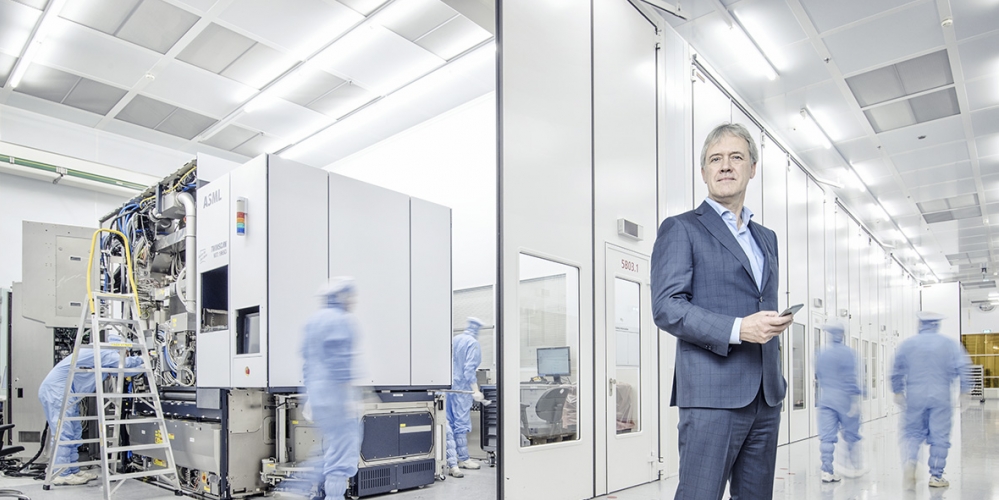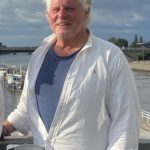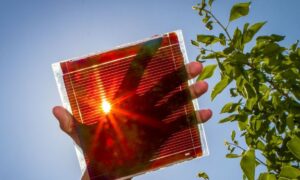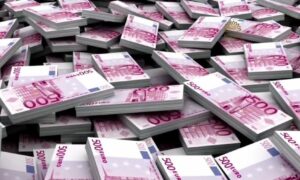The cult of the startup has swept the United States and Europe in the intervening years since digital disrupters such as Facebook and Google changed the world almost overnight.
What’s lost amid all this is that every company is a startup somewhere along the line, with the same near-death moments and dreams of changing the world.
That includes one of Eindhoven’s foundational companies. If you’re an American techpat, you’ve likely never heard of Eindhoven or ASML. But ASML, which is typical of the sophistication of Eindhoven’s industrial research and manufacturing base, is a publicly traded company that dominates the global photolithography industry, the advanced technology that makes digital high-tech even possible.
Last week, Sunny Stalnaker, executive VP of sales and customer management at ASML, gave the crowd at “High Teach Capital,” Eindhoven’s installment of Startup Fest Europe, the behind-the-scenes story as she talked about customer development.
And it’s an amazing startup adventure. “We were always one mistake away from bankruptcy,” Stalnaker told the crowd of entrepreneurs, investors and economic-development officials.
In her 30-minute talk, Stalnaker gave her audience anecdotes about how trials and tribulations – in the early days, when it rained, the roof leaked at their offices – made ASML stronger. She also connected what we think of as “radical” startup mentality to what are now conventional practices.
“Before ‘minimal viable product’ was a buzzword, we shipped systems that were only half-finished, delivered in the field,” Stalnaker told an audience of about 300 at Philips Stadium in Eindhoven. That rush to market turned out to define ASML culture. From then on, ASML embedded with clients. Literally. “We created at ASML a culture with greater customer engagement,” she said.
Like so many companies here, ASML was founded in as a joint venture with Philips, the electronics giant that was based in Eindhoven, but moved its HQ in 2001 to Amsterdam. ASML builds photolithography systems for the semiconductor industry. The complex process uses a technique not unlike photography to etch microcircuitry onto silicon chips, circuitry a few tens of nanometers in size. The process is used in making all sorts of integrated circuits including flash drives and memory for digital cameras.
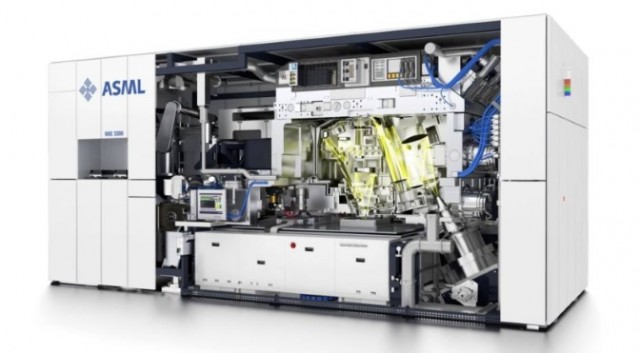 In 1991 ASML shipped its first machine and also won its first contract with TSMC in Taiwan, a major turning point in ASML’s fortunes, Stalnaker said. But the only way to survive in the business in which ASML competed against Canon, Samsung, Nikon and other high-profile companies was to achieve greater efficiency.
In 1991 ASML shipped its first machine and also won its first contract with TSMC in Taiwan, a major turning point in ASML’s fortunes, Stalnaker said. But the only way to survive in the business in which ASML competed against Canon, Samsung, Nikon and other high-profile companies was to achieve greater efficiency.
ASML sent 50 engineers to TSMC’s Taiwan operations for 14 months, “working in every aspect of the customer’s cost structure,” sharing the client’s sensitive trade secrets, Stalnaker said. In those days, she added, the startup mindset “very much existed in this industry … and customer intimacy remains an (integral) part of our business strategy.”
By literally integrating into customers’ operations, ASML achieved its goals, and then began exceeding them. Wildly.
In 2001, two Japanese camera companies owned the industry. Nikon had a 41.6 percent share of the photolithography market, compared to 34.8 percent for Canon and only 22.4 percent for ASML, according to industry publications. By 2011, ASML’s market share was 57 percent, with Nikon dropping to 27.8 percent and Canon’s share only 15.2 percent. Now, there are headlines in industry publications asking, “Can Nikon or Canon ever catch ASML in the lithography market?”
 In the intervening years, ASML has come to dominate the industry with almost an insurmountable market share, though Stinaker made it clear that ASML had several financial crises over the years. That situation appears to have stabilized after 2012, when Santa Clara, Calif-based Intel Corp. agreed to invest $4.1 billion in ASML to accelerate research, taking about a 15-percent stake in the Dutch company in return.
In the intervening years, ASML has come to dominate the industry with almost an insurmountable market share, though Stinaker made it clear that ASML had several financial crises over the years. That situation appears to have stabilized after 2012, when Santa Clara, Calif-based Intel Corp. agreed to invest $4.1 billion in ASML to accelerate research, taking about a 15-percent stake in the Dutch company in return.
One of the follow-up questions we wanted to ask was, “How much does an ASML photolithography machine cost?” In researching this post, we found a partial answer. ASML recently shipped three of its EUVL – extreme ultraviolet lithography – units for an average selling price of $52 million. Wow.
ASML reported about 1.3 billion euros in sales for Q1, 2016. You can see financials here on the SeekingAlpha website in a May 27 post by analyst Dhierin Bechai.
Also, you can see the infographic for ASML’s financial model here from a 2014 Investors Day roadshow in London. A model that projects 10 billion euros in annual sales by 2020.
If this sounds like a company you’d like work for, you’re in luck. ASLM has 12,000 employees, many of whom are top engineers, physicists and software geeks from the U.S., Great Britain, India and other countries.
Here’s the link to their employment opportunities. And they have a lot!
The scary thing for those of you who don’t have Eindhoven on your radar is, many cities in the world would be thrilled to only have ASML. But this is Eindhoven, and ASML is but one high-tech company among dozens.
Co-CEO of Dispatches Europe. A former military reporter, I'm a serial expat who has lived in France, Turkey, Germany and the Netherlands.


